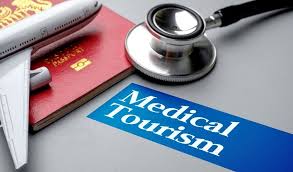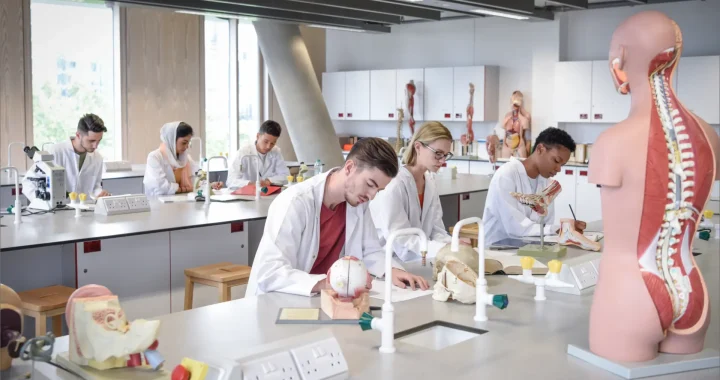The Evolution of Medical Science: From Ancient Remedies to Modern Breakthroughs

Medicine is a field that has continually evolved, driven by humanity’s relentless quest to alleviate suffering, cure diseases, and extend life. From the earliest herbal remedies and rudimentary surgeries practiced in ancient civilizations to the cutting-edge technologies and life-saving treatments of modern-day healthcare, medical science has made remarkable strides. However, while the tools, techniques, and technologies may have changed, the core objective of medicine remains the same: to understand the human body and ensure its optimal functioning.
This article explores the fascinating evolution of medical science, highlighting key milestones in its history, the current state of medical care, and the direction in which the field is heading. By understanding where we’ve been, we can better appreciate the breakthroughs of today and anticipate the innovations of tomorrow.
The Ancient Foundations of Medicine
The origins of medical practice are steeped in history, with early forms of healthcare deeply rooted in spiritual and naturalistic beliefs. In ancient civilizations like Egypt, Mesopotamia, India, and China, medicine was often intertwined with religion and mysticism. Physicians in these societies, though primitive by today’s standards, laid the groundwork for many of the practices we now consider fundamental to modern medicine.
In ancient Egypt, for instance, the Ebers Papyrus, a medical text dating back to around 1550 BCE, documented hundreds of treatments for ailments ranging from gastrointestinal issues to eye infections. Early Egyptian physicians also performed rudimentary surgeries, such as trepanation (the practice of drilling holes in the skull to treat head injuries or mental disorders). While many of their treatments were based on superstition or herbal remedies, some were remarkably effective and paved the way for future medical advancements.
Similarly, the ancient Greeks made significant contributions to medicine, largely through the work of Hippocrates. Known as the “Father of Medicine,” Hippocrates established the idea that disease was not a punishment from the gods but rather a natural process that could be understood and treated. His famous Hippocratic Oath, still taken by modern-day physicians, emphasizes the importance of ethics and patient care, marking an enduring commitment to professionalism in the medical field.
The Middle Ages and Renaissance: A Time of Stagnation and Revival
The fall of the Roman Empire and the subsequent Middle Ages saw a decline in medical knowledge and practice. Much of the scientific learning of the Greeks and Romans was lost or suppressed during this period, especially in Europe, where medicine was heavily influenced by religious doctrine. In many cases, the Church’s teachings overruled empirical observation, and many medical practices remained stagnant.
However, the Islamic world preserved and built upon much of the ancient medical knowledge. Scholars like Avicenna (Ibn Sina) and Al-Razi translated Greek texts and advanced medical science by making their own contributions to pharmacology, surgery, and diagnostics. Avicenna’s “Canon of Medicine,” written in the 11th century, remained a standard medical text in both the Islamic world and Europe for centuries.
The Renaissance, beginning in the 14th century, marked a turning point in the history of medicine. With a renewed focus on human anatomy, dissection, and observation, many key medical advancements were made. One of the most notable figures of this period was Andreas Vesalius, whose work on human anatomy, particularly his book De humani corporis fabrica (On the Fabric of the Human Body), corrected many misconceptions held since ancient times and laid the foundation for modern physiology.
The Birth of Modern Medicine: The 17th to 19th Centuries
The scientific revolution of the 17th century catalyzed rapid progress in medicine. The development of the microscope by Antonie van Leeuwenhoek and the discovery of the circulation of blood by William Harvey were instrumental in reshaping our understanding of the human body. These discoveries demonstrated that human beings could be studied scientifically, leading to a more rational and empirical approach to medicine.
By the 19th century, the advent of germ theory revolutionized medicine. Pioneers such as Louis Pasteur and Robert Koch proved that microorganisms were the cause of many diseases, which led to the development of vaccines, antibiotics, and the practice of sterilization. Pasteur’s work, in particular, laid the groundwork for the modern understanding of infectious diseases, and his development of the rabies vaccine saved countless lives.
In addition to these microbiological breakthroughs, the field of surgery underwent significant changes. In the early 1800s, the discovery of anesthesia allowed for longer, more complex surgeries without the extreme pain experienced by patients. Surgeons like Joseph Lister also pioneered antiseptic techniques, reducing infections and dramatically improving surgical outcomes.
The 20th Century: A Golden Age of Medical Innovation
The 20th century saw an explosion of medical discoveries and technological advancements that transformed healthcare. Perhaps one of the most significant milestones was the discovery of penicillin by Alexander Fleming in 1928. This antibiotic revolutionized the treatment of bacterial infections and saved millions of lives.
The early 1900s also saw the development of vaccines for diseases like polio and tuberculosis, which had previously ravaged populations. The establishment of public health systems and the advent of widespread vaccination campaigns further contributed to the decline of infectious diseases.
Medical imaging technologies, such as X-rays, CT scans, and MRIs, fundamentally changed how doctors diagnose and treat diseases. These technologies allowed for non-invasive imaging of internal structures, facilitating earlier detection of conditions like cancer, heart disease, and neurological disorders.
Additionally, the mid-20th century witnessed the discovery of the structure of DNA by James Watson, Francis Crick, and Rosalind Franklin, which set the stage for the development of molecular genetics. This breakthrough led to the rapid expansion of genetic research and the eventual creation of biotechnology, allowing for the development of gene therapies and personalized medicine.
The Present: Precision Medicine and Technological Integration
Today, medicine is in a state of rapid transformation, with the integration of digital technologies and data science into healthcare. The concept of “precision medicine” has emerged, focusing on tailoring treatments to individual genetic profiles, lifestyle factors, and environmental exposures. This approach has shown promise in treating complex diseases such as cancer, where genetic information can guide the selection of specific therapies.
Telemedicine has become increasingly prevalent, particularly in response to the COVID-19 pandemic, providing healthcare access to people in remote areas or those unable to visit a healthcare facility in person. Mobile apps, wearable health devices, and artificial intelligence have also started to play a larger role in monitoring patient health, diagnosing conditions, and even predicting disease outbreaks.
Furthermore, advancements in regenerative medicine and stem cell research offer hope for the treatment of conditions previously considered incurable, such as spinal cord injuries and neurodegenerative diseases. These developments are pushing the boundaries of what is possible in medical science, offering new treatments and potentially life-changing therapies for patients.
The Future of Medicine: Challenges and Opportunities
As medicine continues to evolve, several challenges remain. The rising cost of healthcare, disparities in access to medical services, and ethical concerns surrounding emerging technologies like gene editing all require careful consideration. However, the potential for breakthroughs in areas such as artificial intelligence, genomics, and nanotechnology offers exciting prospects for the future.
One area of particular interest is the exploration of longevity and aging. Researchers are increasingly focused on understanding the biological mechanisms of aging and developing therapies that could extend human lifespan while improving the quality of life in older age. As our understanding of genetics and cellular biology deepens, it is conceivable that we may one day have the ability to slow down or even reverse some aspects of aging.
Conclusion
From ancient herbal remedies to the promise of personalized medicine, the history of medical science is a testament to human ingenuity, perseverance, and compassion. Each discovery has been built upon by countless individuals, and the results have been transformative, improving the quality of life for billions of people worldwide. As we move forward into an era defined by technological innovation and scientific progress, the potential for further medical breakthroughs is limitless. What remains constant, however, is the fundamental goal of medicine: to understand, heal, and care for the human body in all its complexity. As medicine continues to evolve, it will undoubtedly continue to change the world for the better.

 The Increasing Use of Technology in Medical Manufacturing
The Increasing Use of Technology in Medical Manufacturing  Dr. Tiziano Scarabelli Continues to Develop Successful and Impactful Medical Career
Dr. Tiziano Scarabelli Continues to Develop Successful and Impactful Medical Career  Medical Assistant Career: Things That Aspiring Professionals Must Know!
Medical Assistant Career: Things That Aspiring Professionals Must Know!  Medical Tourism in Mexico – An Increasing Business
Medical Tourism in Mexico – An Increasing Business  Medical Administrative Assistant
Medical Administrative Assistant  Needs for any Career in Medical Transcription
Needs for any Career in Medical Transcription  The Role of Supplements in Modern Health: A Balanced Perspective
The Role of Supplements in Modern Health: A Balanced Perspective  Which delta 9 gummies are known for their potency?
Which delta 9 gummies are known for their potency?  The Art of Healing: A Comprehensive Look at Modern Treatments and Approaches
The Art of Healing: A Comprehensive Look at Modern Treatments and Approaches  The Evolution of Medical Science: From Ancient Remedies to Modern Breakthroughs
The Evolution of Medical Science: From Ancient Remedies to Modern Breakthroughs